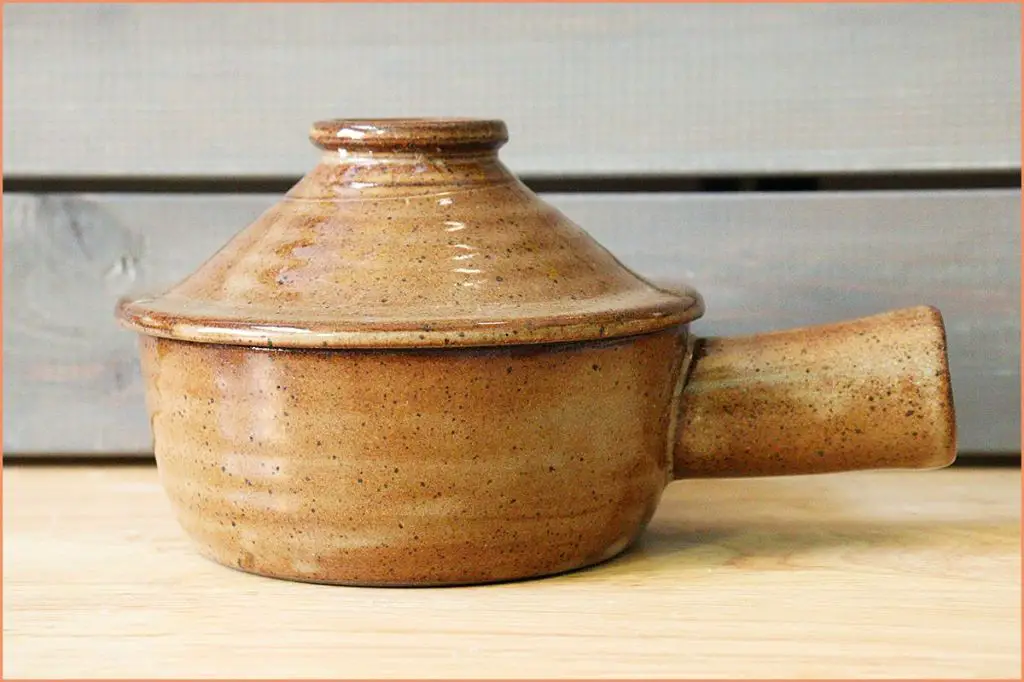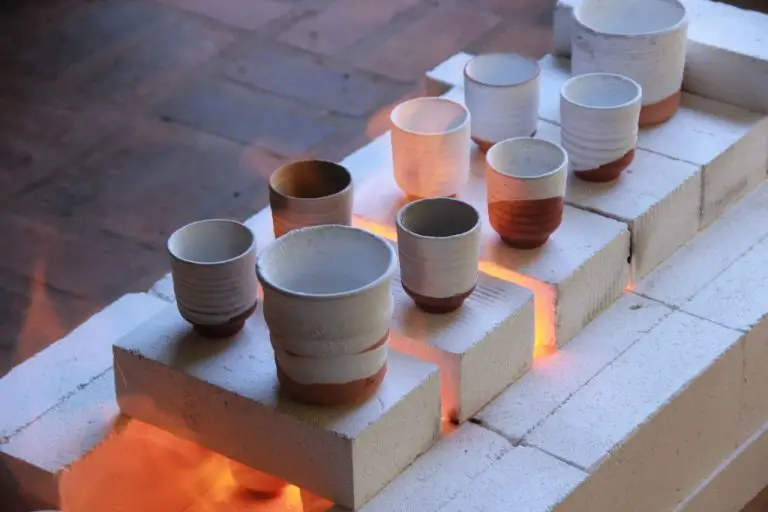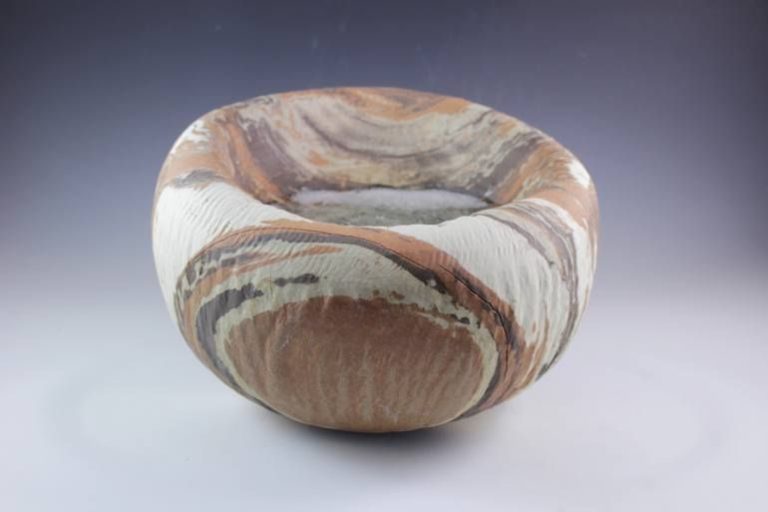Is Earthenware Clay Good?
What is earthenware clay?
Earthenware clay is a type of ceramic clay body characterized by more open porosity and a coarser texture compared to other clays. It is typically made from a combination of ball clay, kaolin, quartz, and feldspar. The higher porosity allows earthenware to absorb more water which makes it easier to work with but also reduces its strength after firing. Earthenware clay can be fired at lower temperatures ranging from 1000-1200°C or 1832-2192°F which allows a wide range of colors and glazes.
The most common types of earthenware clays include:
- Terracotta – An unglazed orange/red earthenware made from iron-rich clay.
- Redware – A red colored earthenware popular in North America.
- Buffware – Light colored earthenware made from low iron clays.
- Creamware – Off-white earthenware popular in the 18th century.
Compared to stoneware and porcelain clays, earthenware has larger clay particles, more open porosity, and a lower firing range which affects its strength, absorption, and glazing properties.
History and origins
Earthenware is one of the oldest types of pottery, with artifacts dating back over 25,000 years ago to as early as 29,000–25,000 BC https://en.wikipedia.org/wiki/Earthenware. It originated during the Neolithic period in cultures across the world, including China, the Mediterranean, the Middle East, and the Americas.
Early earthenware was hand formed from clay and fired at low temperatures below 1200°C. It was used for utilitarian purposes like cooking pots and storage vessels as well as ritual and ceremonial objects. Earthenware developed alongside innovations in firing technology and was the only type of pottery produced worldwide up until the development of stoneware and porcelain https://www.britannica.com/art/pottery.
Common uses today
Earthenware clay is commonly used today for a variety of purposes:
Tableware: Earthenware is a common material used for plates, bowls, mugs and other types of tableware. It provides an inexpensive and durable option for daily use. The porous nature of earthenware makes it less suitable for holding liquids compared to materials like porcelain. However, its ability to stand up to repeated use makes it a practical choice for plates, bowls and some serving dishes (citation: https://en.wikipedia.org/wiki/Earthenware).
Cooking vessels: The heat resistance of earthenware makes it an ideal material for baking dishes, casserole dishes, tagines, roasting pans and other cooking vessels. Its durability allows it to be used repeatedly in the oven without cracking. Earthenware’s porous nature gives it excellent heat retention properties that can help with slow, even cooking (citation: https://artabys.com/the-beauty-of-earthenware-an-exploration-of-its-history-and-uses/).
Plant pots: Terracotta clay is one of the most common materials used for flower pots and planters. The porous nature of earthenware allows air and water to reach plant roots while also providing good drainage. Terracotta pots are inexpensive, durable and allow healthy root growth (citation: https://en.wikipedia.org/wiki/Earthenware).
Sculptures: The malleability, workability and inexpensive nature of earthenware clay has made it a popular material for sculptures, figurines and decorative objects throughout history. From ancient Greek terracotta figurines to contemporary pottery, earthenware allows artists to shape creative works and fire them to permanency (citation: https://artabys.com/the-beauty-of-earthenware-an-exploration-of-its-history-and-uses/).
Properties and characteristics
Earthenware has some key properties and characteristics that distinguish it from other types of pottery and ceramics. Some of the main ones are:
Porous nature: Earthenware clay has a coarse texture and is quite porous when fired. This means liquid and moisture can seep through unglazed earthenware (Earthenware). The clay body is soft and absorbent.
Durability: Being porous, unglazed earthenware lacks the hard vitrified surface of stoneware or porcelain, making it less durable and more prone to chipping or cracking. However, when glazed, it develops some water resistance. Overall, earthenware has moderate durability that can vary based on the quality of clay and firing (What is the Difference Between Earthenware and Stoneware Clay).
Thermal properties: Earthenware has a lower firing temperature than stoneware or porcelain, generally around 1000-1200°C. At this temperature, the clay remains somewhat porous and permeable to liquids. The lower firing temperature makes earthenware less thermally resistant as well. It can withstand freezer temperatures but may crack if exposed to extreme temperature changes (Earthenware).
Benefits
Earthenware clay offers several advantages that make it a popular choice among artisans and home cooks. Some of the key benefits include:
Inexpensive – Earthenware clay is one of the most affordable clays available. It is relatively easy to find and purchase compared to other types of clay, making it an accessible option for crafters and hobbyists on a budget.
Easy to work with – The soft, pliable nature of earthenware clay makes it straightforward to wedge, roll, cut, shape, and join. Its malleability allows creators to craft intricate details and patterns. Earthenware also retains its form well while drying.
Microwave/oven safe – Unlike some other clays, properly fired earthenware is durable enough to withstand repeated heating and cooling cycles. Pieces made from earthenware clay can safely go in the microwave, conventional oven, toaster oven, and dishwasher.
Limitations
Earthenware clay has some notable limitations that should be considered before use.
One key limitation is its brittleness. Earthenware clay is porous and cracks easily, making it prone to chipping and breaking. Items made from earthenware must be handled gently.
Earthenware clay products are also quite heavy. The dense nature of the clay results in cookware and pottery that is cumbersome and difficult to transport or ship safely. Larger pieces in particular can be extremely heavy.
Additionally, earthenware clay is not watertight. It is porous and allows water to seep through. This makes it unsuitable for applications that require liquid to be contained or kept dry, such as indoor plumbing or water storage.
While attractive for its rustic look, these limitations are important to keep in mind when selecting earthenware clay for a particular use or application.
Comparisons with other clays
Earthenware differs from other common clays like terracotta, stoneware, and porcelain in terms of composition, firing process, and properties.
Terracotta is an unglazed type of earthenware made from red clay. It is porous and permeable to water. Terracotta is fired at lower temperatures than stoneware or porcelain, making it less dense and durable than those clays (Source 1).
Stoneware is made from finer clay particles than earthenware and is fired at higher temperatures, making it less porous and more durable. Stoneware is more resistant to chipping and absorbing water compared to earthenware. However, stoneware can still absorb some water, unlike non-porous porcelain (Source 2).
Porcelain utilzes the purest white firing clay and is fired at very high temperatures. This makes porcelain harder, denser, and more durable than earthenware or stoneware. Porcelain is non-porous and does not absorb any water. However, it can chip if subjected to extreme temperature changes. Earthenware is more resistant to thermal shock than porcelain.
Safety Considerations
When considering the safety of earthenware clay, two main factors to examine are the lead content and thermal shock resistance.
Earthenware clay contains a higher amount of lead than other clays like porcelain or stoneware (cite: https://thepotterywheel.com/food-safe-clay/). Lead can leach into food and liquids if earthenware is improperly fired or glazed. This makes lead toxicity a concern, especially with serving vessels.

To ensure safety, earthenware vessels used for food and drink should be fired high enough (around 2160°F) for vitrification, which minimizes lead leaching. Glazes must also be food-safe and free from lead (cite: https://community.ceramicartsdaily.org/topic/2208-newbie-question-about-food-safe/).
Additionally, earthenware has lower thermal shock resistance than stoneware. This means it can more easily crack from sudden temperature changes. Care should be taken to preheat earthenware vessels before pouring hot liquids.
Environmental impact
When considering the environmental impact of earthenware clay, it’s important to look at the full life cycle. Clay extraction can disrupt ecosystems, but earthenware itself has some sustainable properties. Being natural and non-toxic, earthenware can be safely reused and recycled. If disposed of properly, earthenware will break down back into the earth over time.
As a natural material, earthenware clay does not release harmful chemicals or fumes, unlike some synthetic materials. It is generally considered more eco-friendly than materials like plastic or resin. With mindful extraction practices and sustainable firing methods, the environmental impact of earthenware production can be minimized.
Overall, earthenware ranks fairly well for sustainability compared to other materials. While not perfect, conscientious companies can take steps to reduce earthenware’s footprint through ethical sourcing, energy-efficient production, and recycling programs. With some care, earthenware clay can be an eco-conscious choice.
Conclusion
In summary, earthenware clay has many pros and some potential cons to consider. On the plus side, it is an extremely versatile material that has been used for thousands of years to create pottery, sculpture, tiles, and other objects. It is readily available, affordable, and easy to work with. Earthenware has good plasticity that allows it to be shaped into various forms. It can be decorated in countless ways and fired at relatively low temperatures. On the downside, earthenware is quite porous and absorbs water, so it may not hold liquids well. It is also relatively soft, fragile, and brittle compared to other clays.
When deciding whether to use earthenware clay, consider the project at hand. For decorative pieces, tableware, or objects that don’t require strength and waterproofing, earthenware is an excellent choice. However, for structural materials, liquid containers, or outdoor use, other clays may be better suited. Test any earthenware piece for absorbency and durability if functionality is a concern. With reasonable precautions, earthenware can bring creativity, artistry, and utility into daily life.



